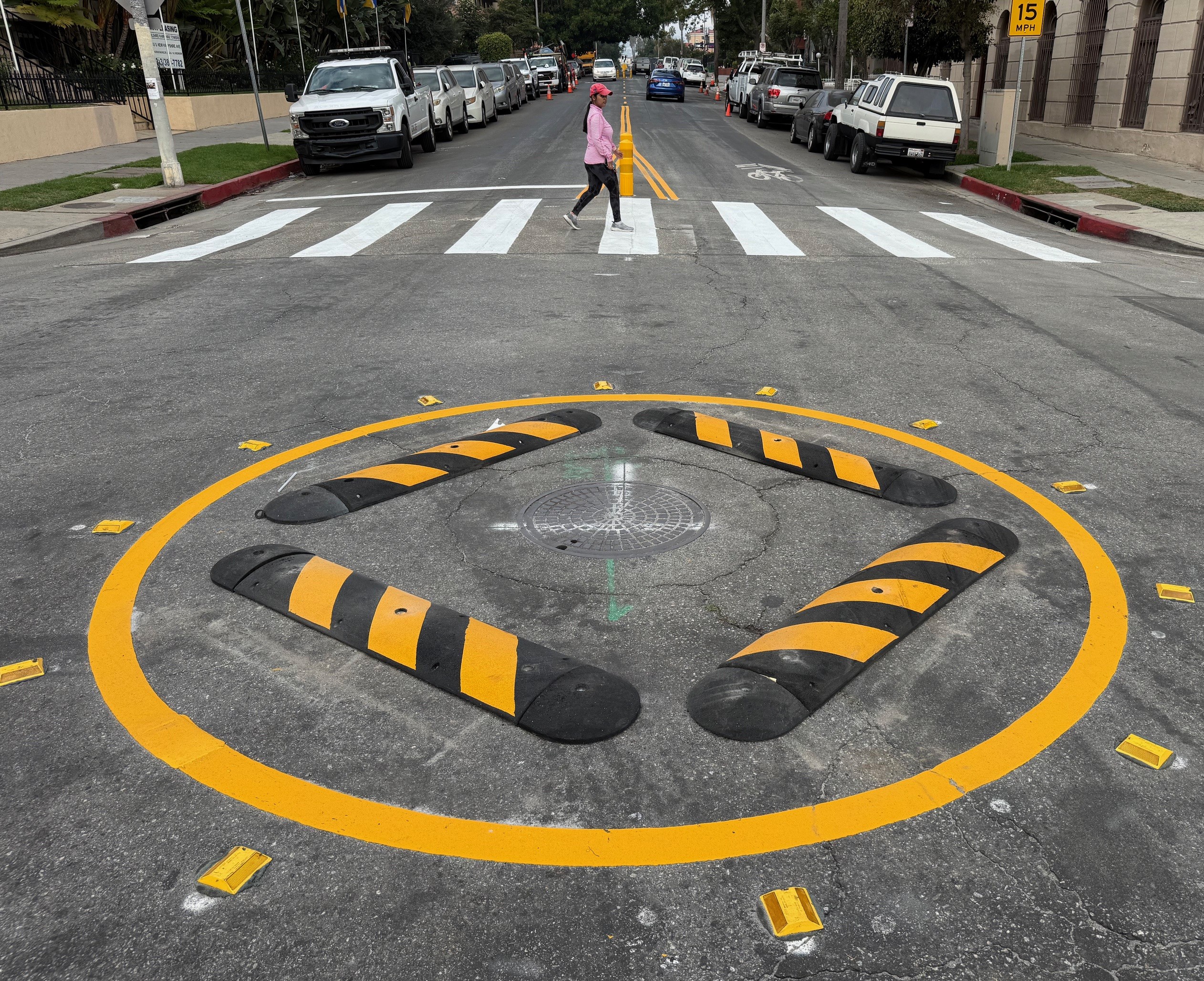
The Metro board will hear a promising proposal [PDF] that increases paid parking at nine stations on three Metro rail lines. According to The Source, the proposal will be presented to the Metro board this month, voted on in March, and go into effect in May if approved.
Charging for station parking was recommended under Metro's 2015 American Public Transportation Association (APTA) review, which states: "Station parking is expensive to build and maintain” and “[parking] costs should be partially recovered to avoid giving park-and-ride customers the largest subsidies, to increase agency revenues, and to effectively manage parking supply.” APTA reviewers further stated that park-and-ride subsidizes higher income riders, decreases transit’s air quality benefits, and that it would be better to invest in convenient, frequent bus service.
Metro's figures, included in the proposal [PDF] show that, even with expensive large parking lots at stations, only 8 to 15 percent of rail riders park at the station. The majority of riders arrive by bus; approximately a third arrive by "other methods" including walking and bicycling.
Metro justifies the pilot on the basis that "non-driving transit patrons are currently under the [accurate] perception that their transit fare is subsidizing parking" with "operations of parking are currently being maintained by Metro’s annual budget without generating any parking revenue to recover a portion of its costs." Metro estimates the pilot 9-station program is estimated to generate approximately $600,000 in annual revenue.

Under the planned pilot, all Metro parking will be paid parking for the following stations:
- Metro Expo Line: La Cienega, Culver City, Sepulveda, Bundy, 17th/Santa Monica College
- Metro Gold Line: Sierra Madre Villa, Atlantic
- Metro Red Line: Universal, North Hollywood.
These nine parking lots represent less than a quarter of Metro's parking portfolio; the majority of which remains free. Many of these pilot stations already charge for some parking on a monthly permit basis, and already experience a shortage of first-come first-served free parking. Others are new Expo 2 stations expected to fill up quickly. Metro's pilot will include a new operating plan where TAP card readers will be used to verify that people parking are actually using transit.
Streetsblog L.A. has urged Metro to end its wasteful parking subsidy policies. Free parking is a very expensive way to bolster Metro rail ridership.
While the new parking policy is an important step in the right direction, one concern is that the proposal remains fairly rigid in dealing with the very fluid realities of parking. The proposal continues the policy of the Metro board setting exact prices. Ideally, the Metro board would set specific parking policy, likely with target objectives, potentially including occupancy and revenue. From this board policy, Metro staff could manage price, increasing or decreasing price over time to meet objectives. Having the full board set exact prices could lead to localized political decisions that may not optimize the overall system.
With new phases extending the Gold and Expo lines opening in 2016, parking demand at existing and new stations may well be difficult to predict. The Metro Gold Line Sierra Madre Villa Station currently experiences higher demand as the suburban terminus of the line; when the Foothill Gold Line extension opens next month, parking demand there will likely decline as it becomes the innermost of seven parking-heavy stations across the San Gabriel Valley. A somewhat similar dynamic could occur at the Metro Expo Line Culver City Station.
Station parking demand may also vary due to gas prices, technological advances, nearby parking supply (paid or unpaid), and other factors. Rather than lock in rigid rates, Metro might be better served by empowering its staff, instead of tightly prescribing them.
The Metro board will have chances to reevaluate the pilot, including a report back scheduled for September 2016.







